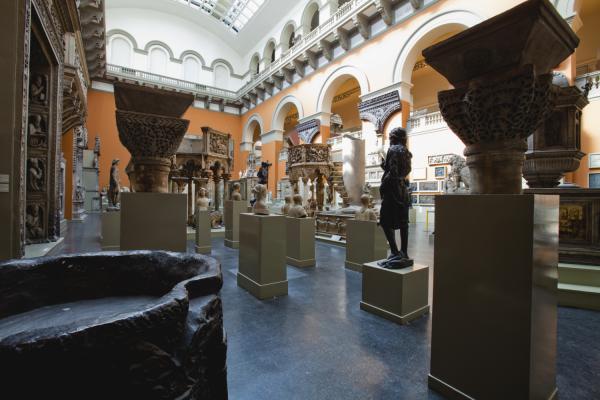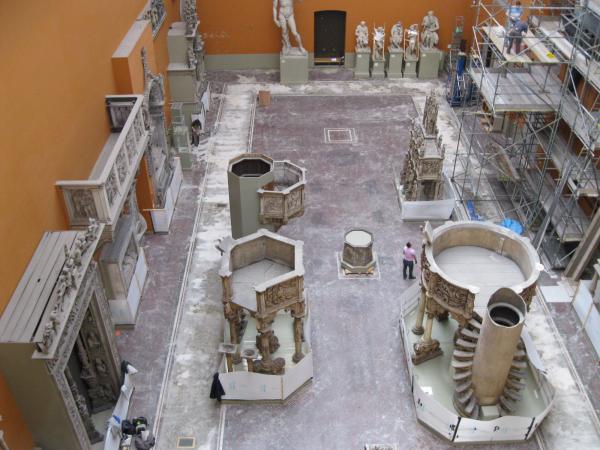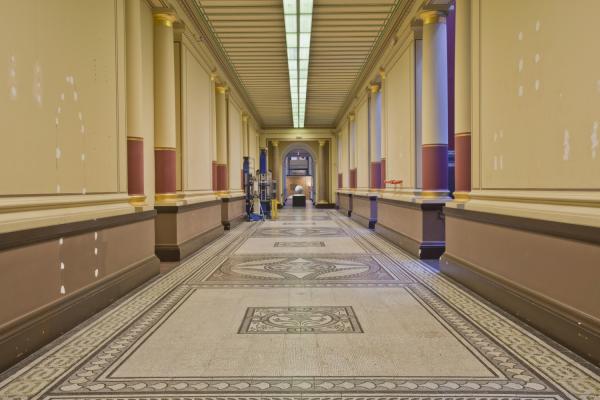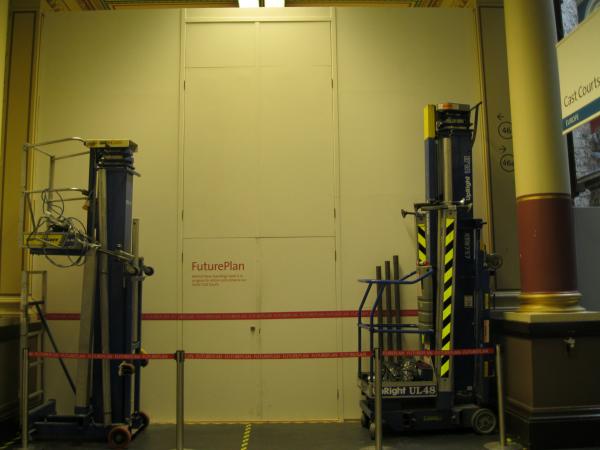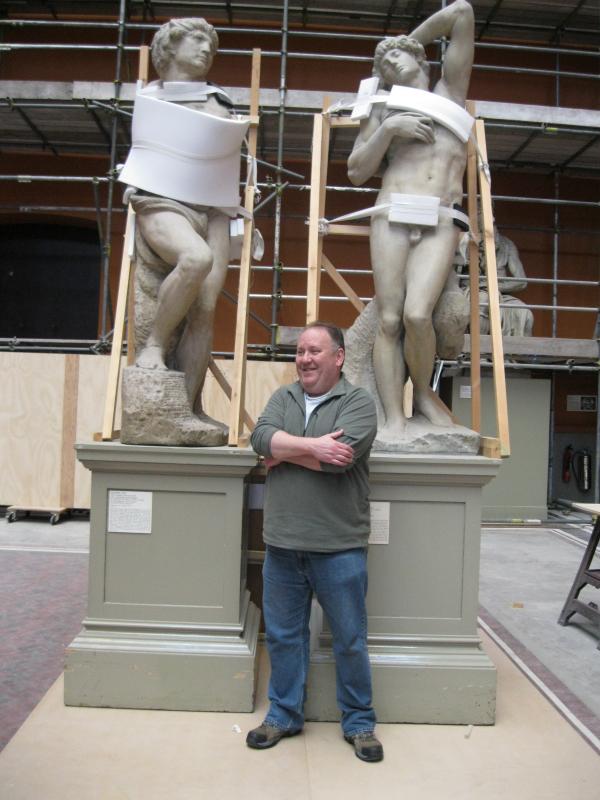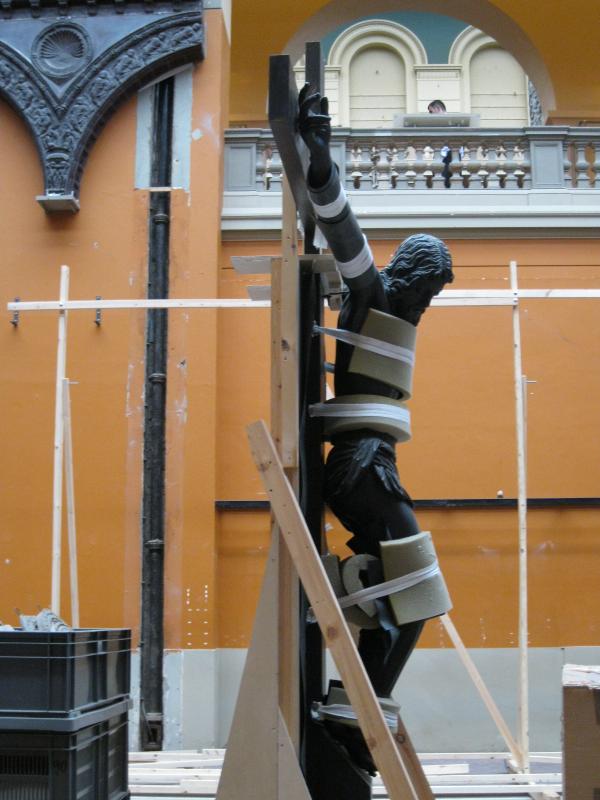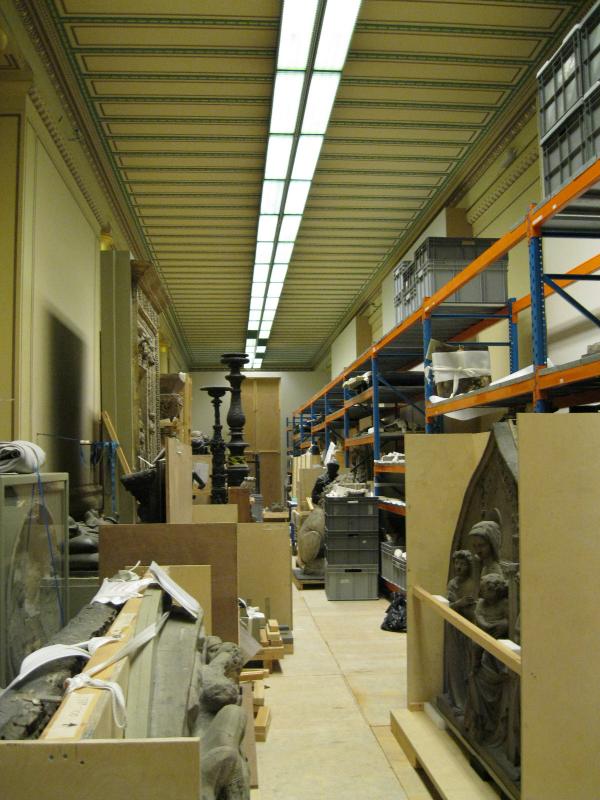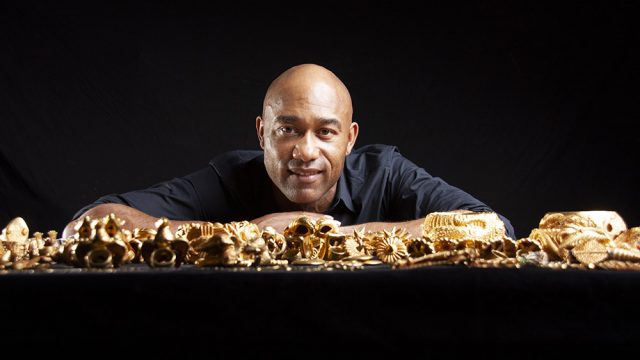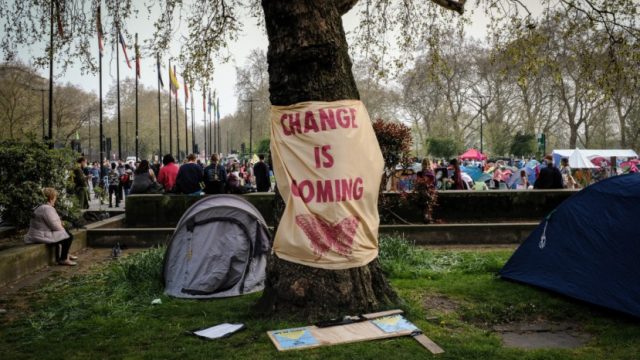If you’ve recently been to the V&A and walked over the Gilbert Bayes Gallery of Sculpture which runs mid-height between the two Cast Courts, you will have seen that the Italian side has been cleared of the majority of its casts.
This was done to both protect the objects from the renovation works and to make space for these works to happen smoothly. All the small-to-medium objects, whether free-standing or wall-mounted, were moved into the corridor between the Courts, which has been transformed into a temporary storage space.
Now, you will ask me, how do you move most of the contents of a large, densely populated gallery into a corridor? I asked the person who masterminded the whole thing, Tony Ryan, from the V&A’s Technical Services Storage team. Tony was certainly the person for the task: aside from the fact that he has comprehensive experience of such work, the Courts hold a special place in his heart.
“The Cast Courts,” he says, “are my favourite galleries and have always been. Even as a child: my mum used to work at Imperial College and during the summer holidays I would pop in the South Ken museums”. Tony’s first job was as a contractor for a company that helped setting exhibitions at the V&A. Then, 26 years ago, Tony joined the Museum as a member of the ‘Heavy Gang’, as was then nicknamed the famed team of technicians that looked after large sculpture. The Courts were pretty much their space, as they used to store their equipment inside Trajan’s column or in the little cupboard behind the San Petronio doorway.
Asked what his favourite object is, Tony beams: “It’s got to be David! You don’t expect to see something like that in a building – like Trajan’s Column too. These were meant to be outdoor; inside the museum they are out of context. That’s what fascinates me. You can still walk past adults and children and hear them gasp in amazement, wondering how the objects got in. The public is always asking how they were done!”
Tony was given four months to move over a hundred pieces out of the Italian side of the Cast Courts. The Technical Services Displays team manager Matthew Clarke and the head of Sculpture Conservation Charlotte Hubbard agreed on what had to be removed to ensure both the safety of the objects and that enough space would be freed for renovation work to start in earnest.
The very first step in this task was to make a comprehensive survey of the chosen objects. Tony first checked the measurements of each of them. He then drew a method statement on how to carry out each individual moves, and broke the statements down into categories.
Among the “specials” either free-standing or wall-mounted, are the copies of the Fontainebleau Nymph, Amadeo’s altarpiece of the Adoration of the Magi, Raphael’s School of Athens, Leopardi’s bronze standard-bearer, Giambologna’s Crucifixion… (some of which will be the subject of later blog entries).
While some of these objects can be moved fairly easily, some require a larger team, and the use of special equipment such as roller trucks or special pallets to be built for transport and support. All the pallets were made in-house, mostly pallets from previous jobs which were “cannibalised” to make new ones. This effective recycling enabled us to keep costs down; it was also eco-friendly, because it used fewer resources and materials.
After the assessment, Tony liaised with Conservation to make sure that the method statements were suited to each individual object. The next step was to determine how to store these objects – some of them being very cumbersome- in making the best use of space, while still allowing easy access: at later stages objects must be conserved, photographed, mounted or simply studied.
Tony is very good at visually imagining how things fit into space. He has a lot of experience managing storage and is responsible for V&A’s offsite store outside of London. One side of the corridor was lined up with heavy-duty steel racking. The large objects were fitted in first and the remaining spaces were filled with smaller objects in Eurocrates or lined up on shelves. The largest objects of all were fitted on the opposite side of the corridor, leaving a central space for circulation and access.
Storage solutions can create impromptu dialogues between objects.
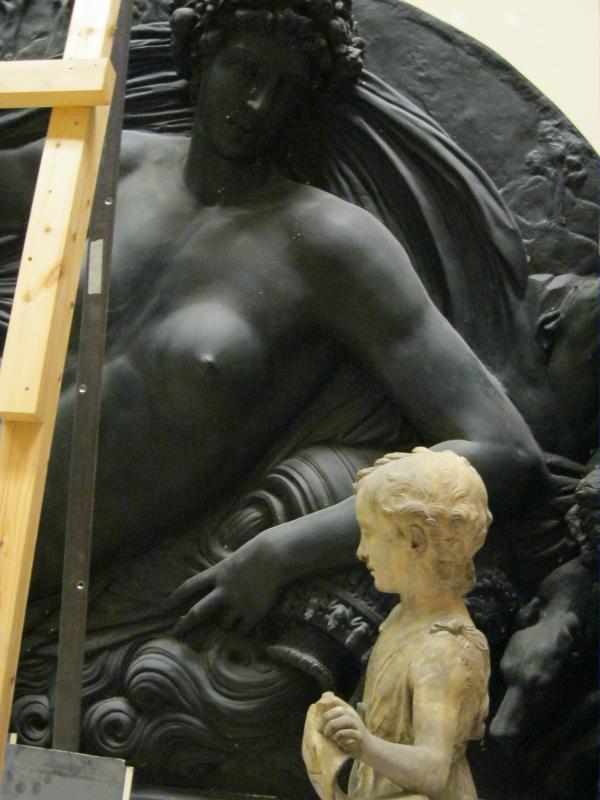
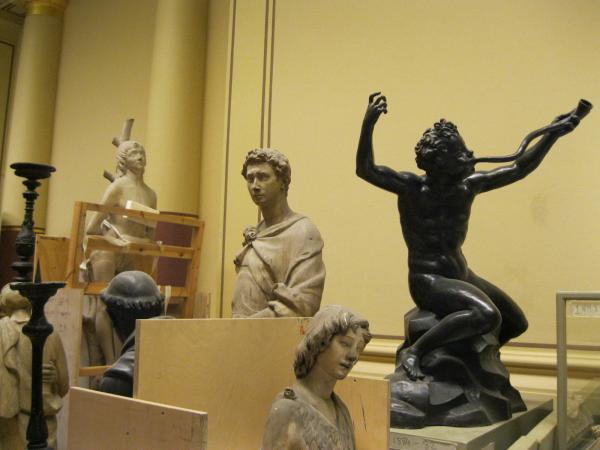
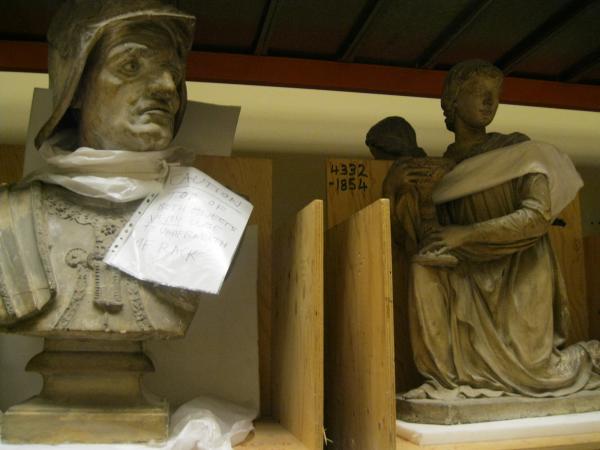
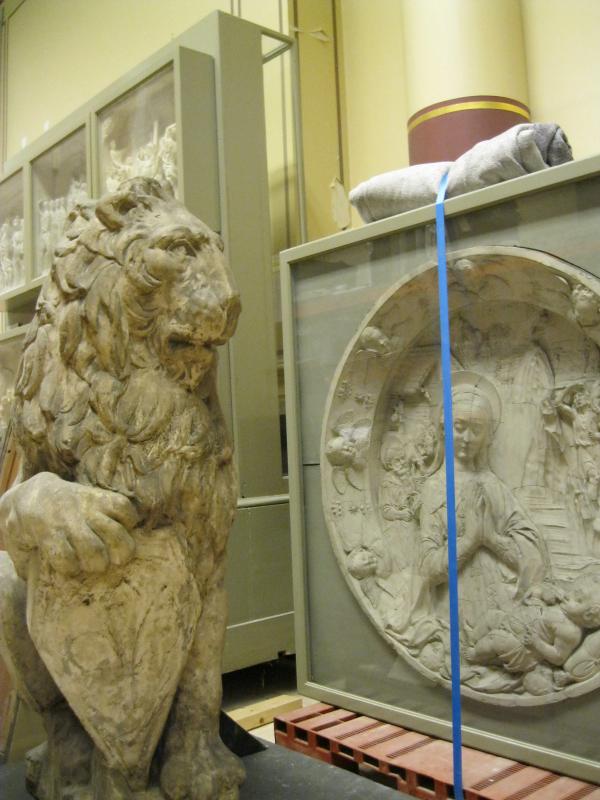
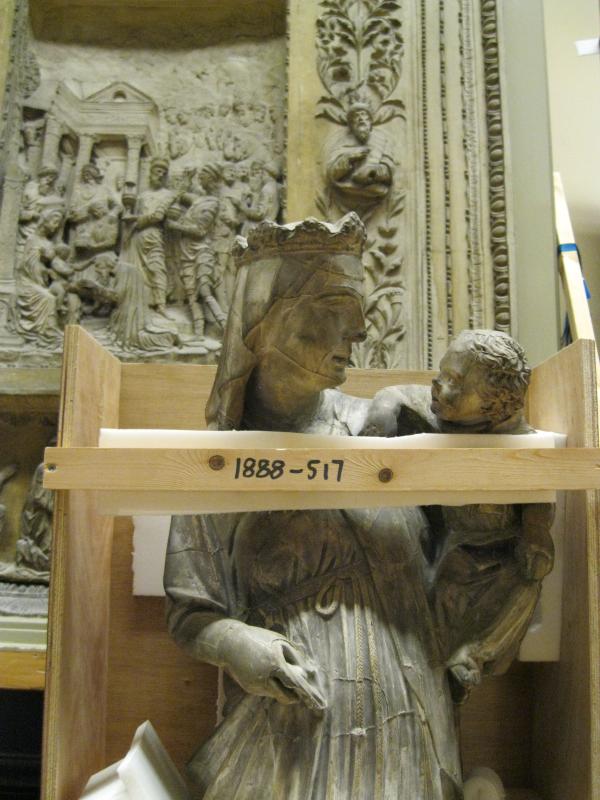
On average, 2 to 3 people a day were working on this storage project, with people called in for very large or awkward objects. The Conservation team remained at hand throughout this time, in case any question arose.
Of course, many objects haven’t been moved, such as the monumental tombs, the pulpits from Pisa, the San Petronio doorway, either because they have been built into the space, they would be impractical to move, or because it could be too dangerous to move the object at this stage. As a rule of thumb, we always try to avoid moving objects unless absolutely necessary, to ensure there is no undue stress on them. Some objects, too, haven’t been moved “yet”.
Asked which part of the project of the Renovation of the Cast Courts Tony most looks forward to, he answers spontaneously; “David! To my knowledge, he’s only been moved three times since he has been at the V&A: once into the Cast Courts, once from one end of the Courts to the other, and in 1984, when he was moved from a more central position to where he now stands against the wall. That was just before I joined the museum.”
In future entries, we’ll be looking in more detail at the “magic” involved in moving some of the objects mentioned above.
